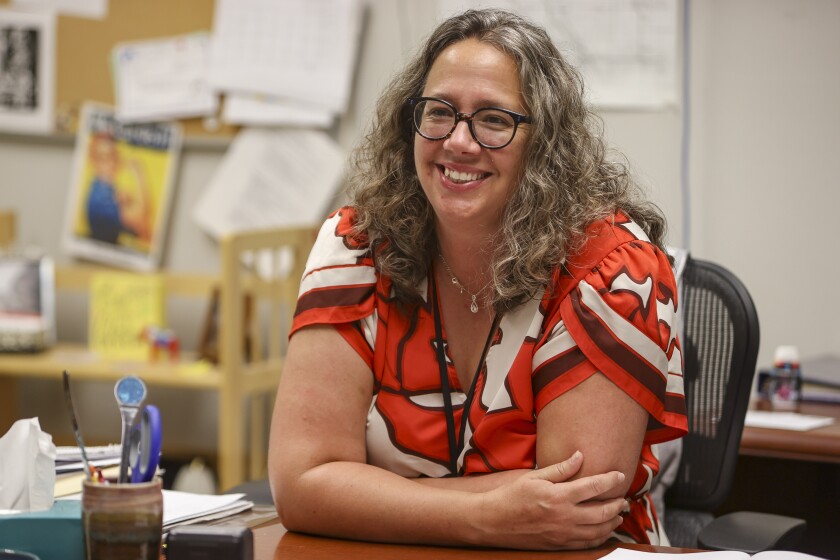The appointment of Laura Forde as the new executive director of the Historical and Cultural Society of Clay County (HCSCC) marks a significant step in enhancing community engagement and historical education in the region. Forde officially assumed her role on July 1, 2023, bringing a wealth of experience from her previous position at the North Dakota Heritage Center and State Museum in Bismarck.
The Hjemkomst Center, renowned for its replica Viking ship created by local legend Robert Asp, houses a diverse array of exhibits that celebrate the rich cultural tapestry of the area. Visitors can explore a range of displays, including regional cuisine and photography that captures rural life. Hidden within this treasure trove of artifacts lies Forde’s vision for revitalizing HCSCC’s connection with the community.
Standing near a display of items such as steamer trunks and musical instruments brought by Norwegian immigrants, Forde expressed her enthusiasm for the collection. “You can see all the things Norwegian people brought over, and it’s just so neat,” she said, highlighting a cast-iron lefse pan that reminded her of her grandmother.
Forde’s passion for history is not merely personal. With a master’s degree in educational leadership, she has dedicated her career to fostering a love for history in others. She believes that a community-based historical museum like HCSCC is the ideal environment for individuals to engage with their heritage. “People need to be engaged and involved in their own learning,” she emphasized.
As she settles into her new position, Forde is focused on understanding the organization and implementing gradual improvements. “I’m looking at how we can streamline some things, for example, using technology more effectively,” she noted. Her goal is to enhance HCSCC’s educational initiatives and community programming.
In-person events, such as the popular History on Tap, are central to Forde’s strategy. These programs extend the museum’s reach into communities throughout Clay County, allowing for interactive, engaging storytelling that resonates with local residents.
Forde commended the HCSCC team for their ability to create international-quality exhibitions despite being a small staff. “This little staff of five or six people are designing international museum-quality exhibitions,” she remarked. This commitment to high standards not only enhances the visitor experience but also strengthens the society’s mission of preserving local history.
“Our approach to historical and cultural preservation is refreshing,” Forde added. “It’s history, but it’s also culture. Just embracing those cultural differences and sharing our heritage in such an impressive way is a refreshing take on historical societies and their value in our communities.”
Forde’s immediate focus is on administrative efficiency as she navigates her first busy fall season at the museum. She is exploring alternative fundraising avenues to complement traditional grants, with the aim of expanding HCSCC’s services to the community. “The first year will focus on small things, but I’ve also been thinking of other ways to fundraise,” she explained.
One notable upcoming event is the “PANGEA: Cultivate Our Cultures 2025,” scheduled for November 15, 2025. This event has become a cherished community tradition, showcasing local chefs, musicians, and artists, and celebrating the diverse culinary landscape of the region. Admission to this vibrant bazaar is free, making it accessible to all.
Through exhibitions like “Land to Table: Food Stories from Clay County,” the museum explores the integral role of food in shaping local identities. This exhibit features artifacts such as lefse-making equipment and church cookbooks, illustrating the deep connections between culture and cuisine.
Forde’s vision for HCSCC is clear: to not only preserve history but to make it dynamic and engaging for all. “The boat is impressive, and there’s no denying that,” she said, welcoming visitors with open arms. “But it’s just the beginning of what we have to offer.”
